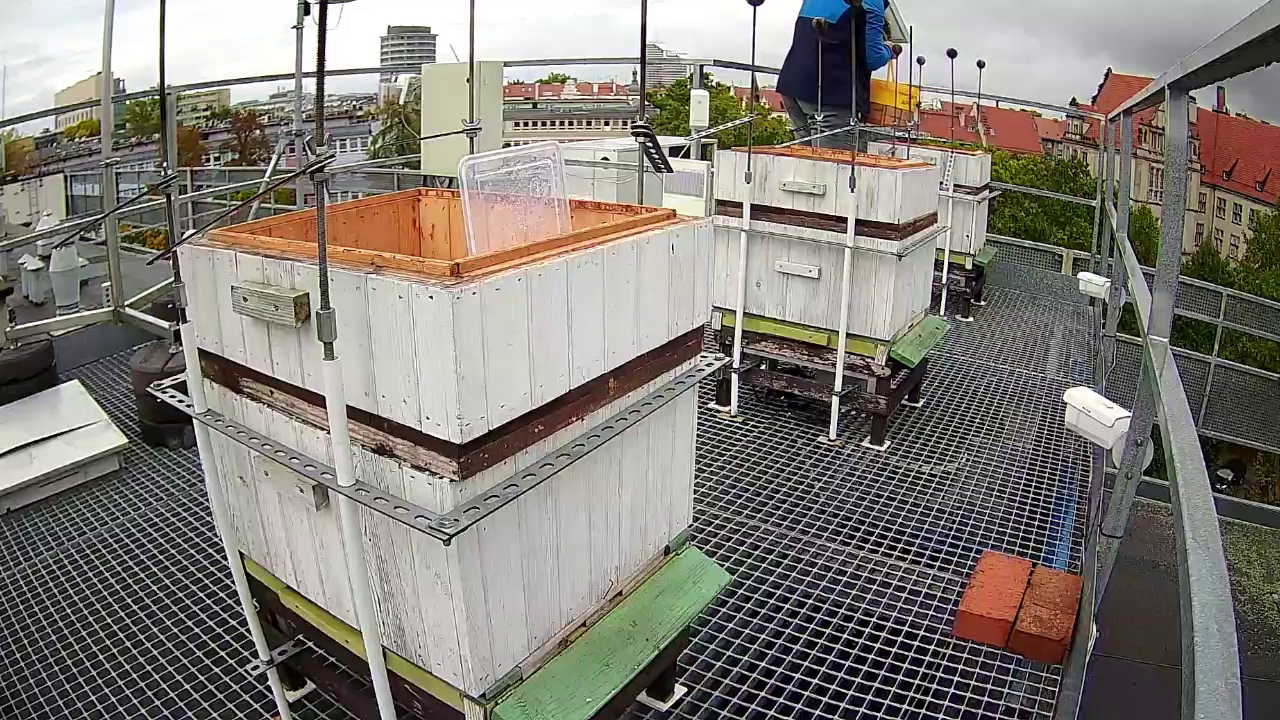
Feeding for winter
To ensure that the bees have enough food for the winter, we have given them invert sugar. They will seal it in the combs, replenishing the supplies in the hive.

To ensure that the bees have enough food for the winter, we have given them invert sugar. They will seal it in the combs, replenishing the supplies in the hive.
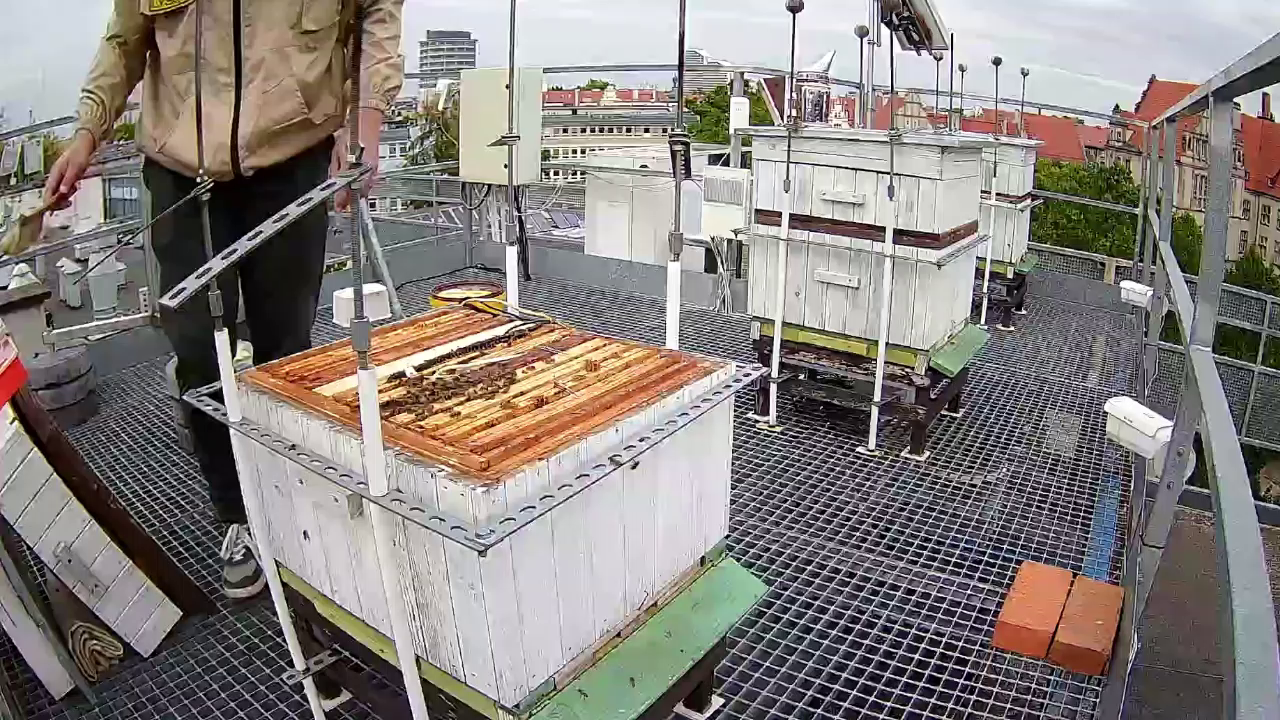
Another move before winter is reducing the number of frames in the hive. This makes it easier for the bees to heat their nest in winter. In addition, we reduce the risk of mould growth on food supplies stored outside the centre of the frames.
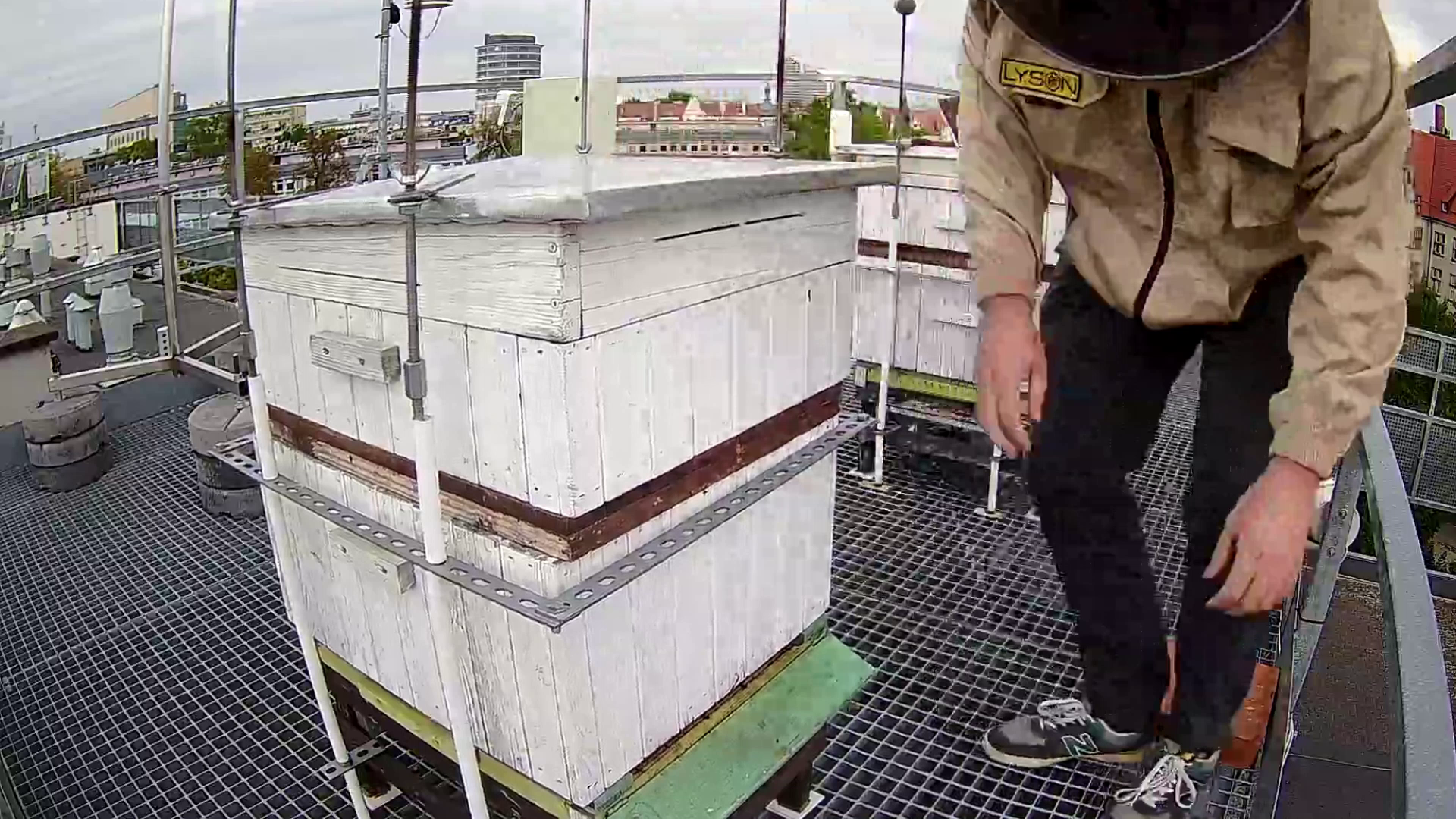
Before winter, we reduced the size of the hive exits to make it easier for bee colonies to maintain suitable thermal conditions when it becomes cold outside.
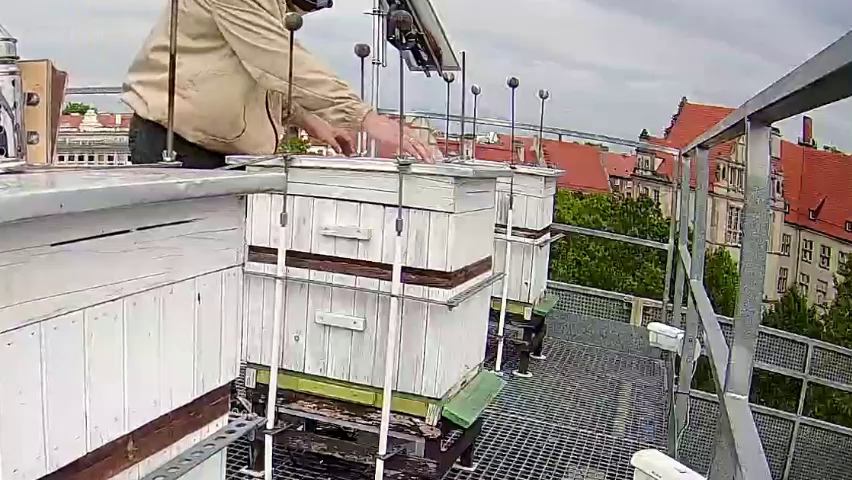
After applying the varroa treatment, we checked the condition of our bee colonies.
We paid attention to the amount of brood and food reserves in order to determine the needs of each hive in terms of preparation for wintering.
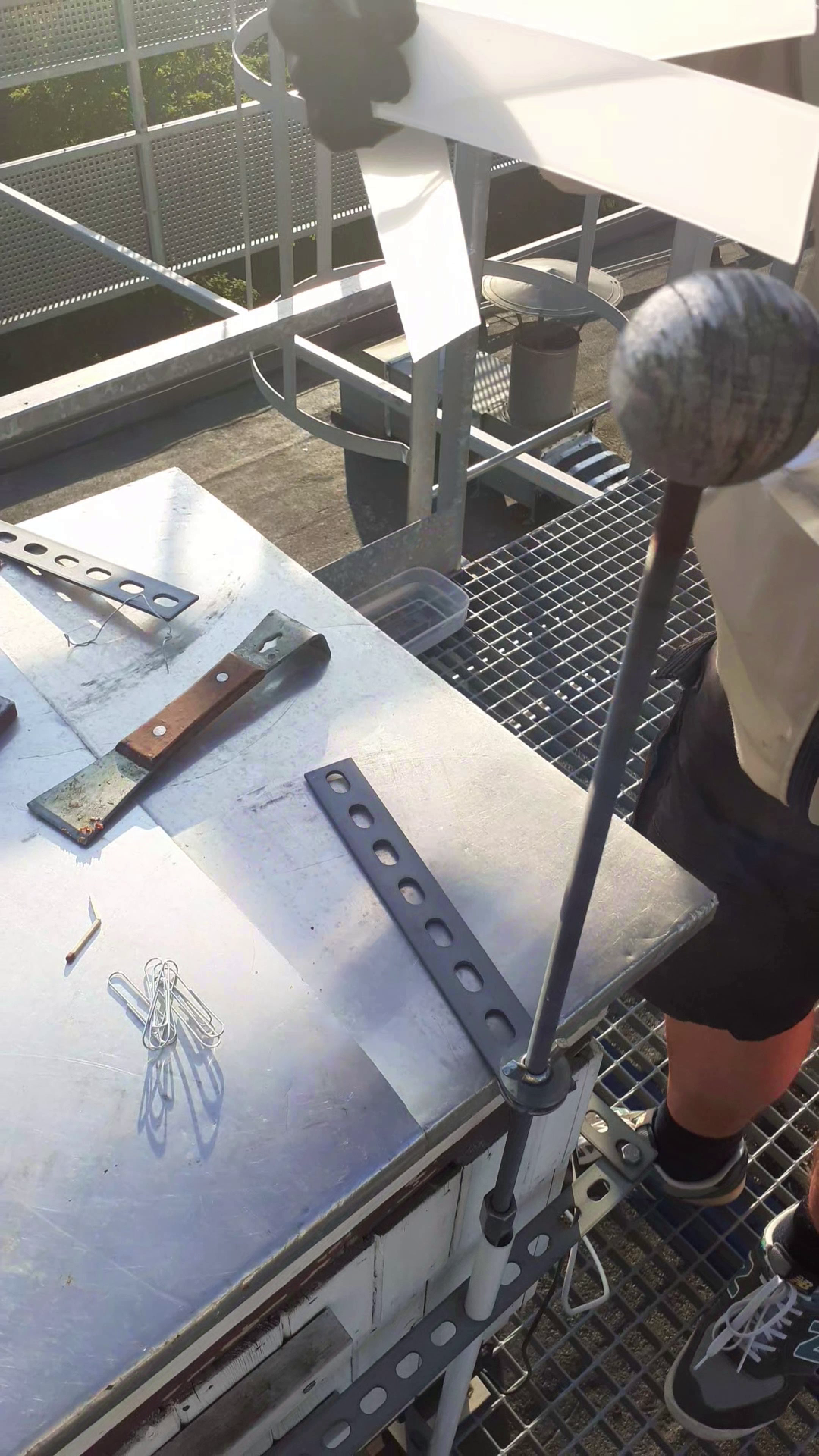
After collecting the honey and rearranging the nest, we began treating the bees for varroa before winter. We chose Biowar 500 as the medicine. Strips soaked in the active substance were hung in the hive, between the frames.
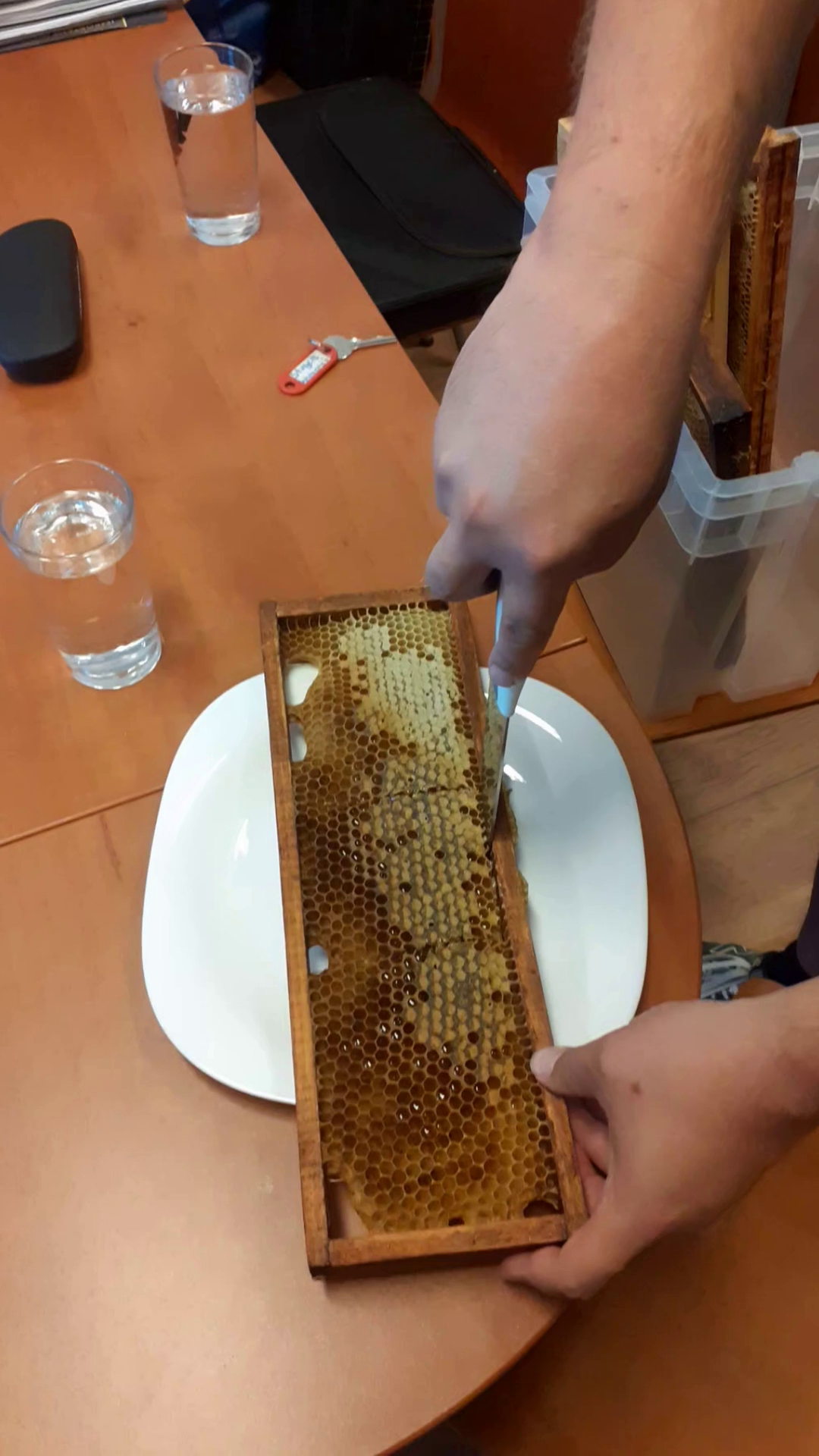
After collecting the honey from Ulopolis, we couldn’t resist tasting it. We cut a piece of honeycomb, popped it into our mouths and … that was amazing!!! 😊
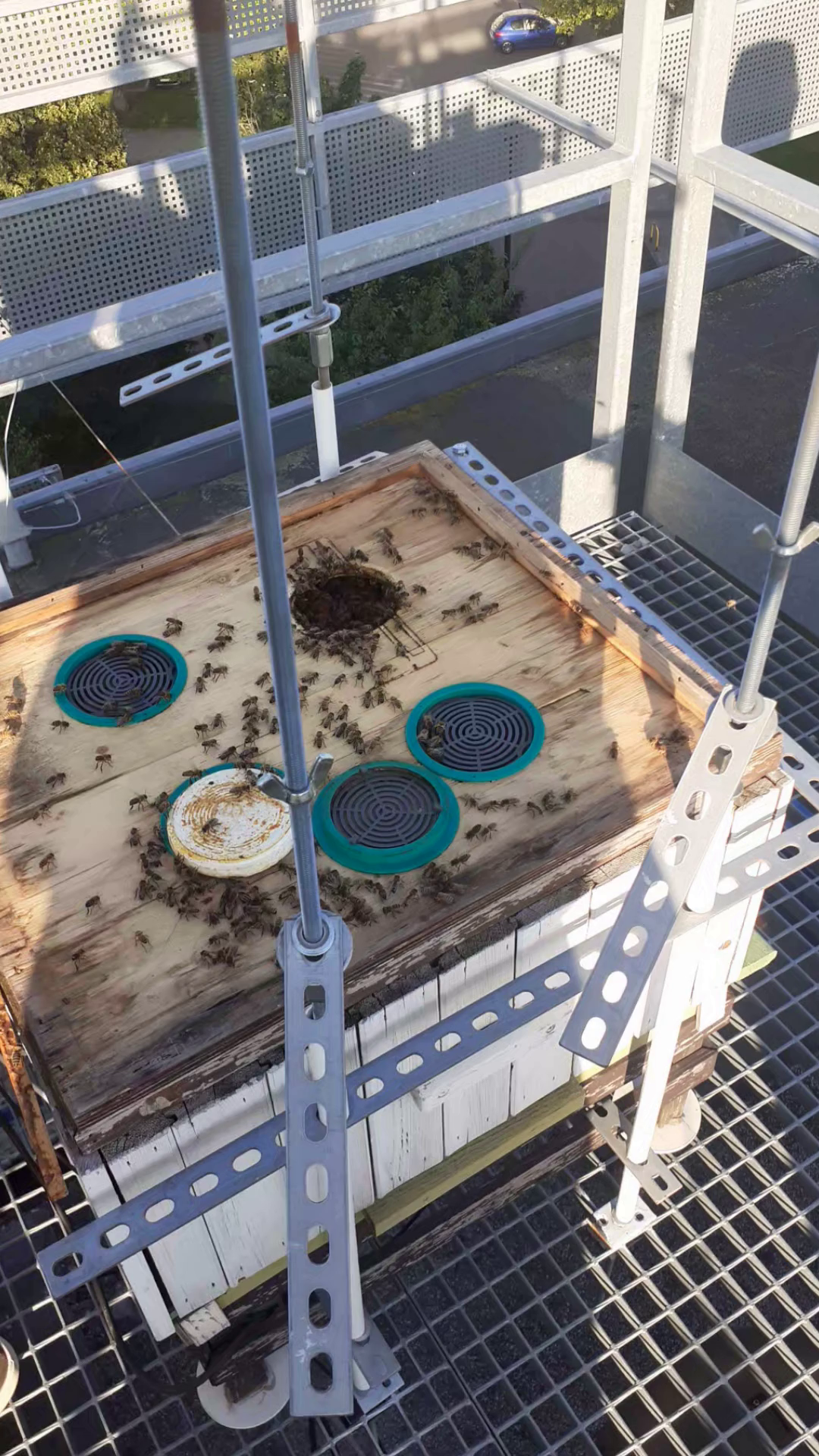
In the recording, we can observe the unique nature of the bees. Once outside the hive, they all immediately find their way back. Without hesitation, they head for the opening in the ceiling to return to the nest.
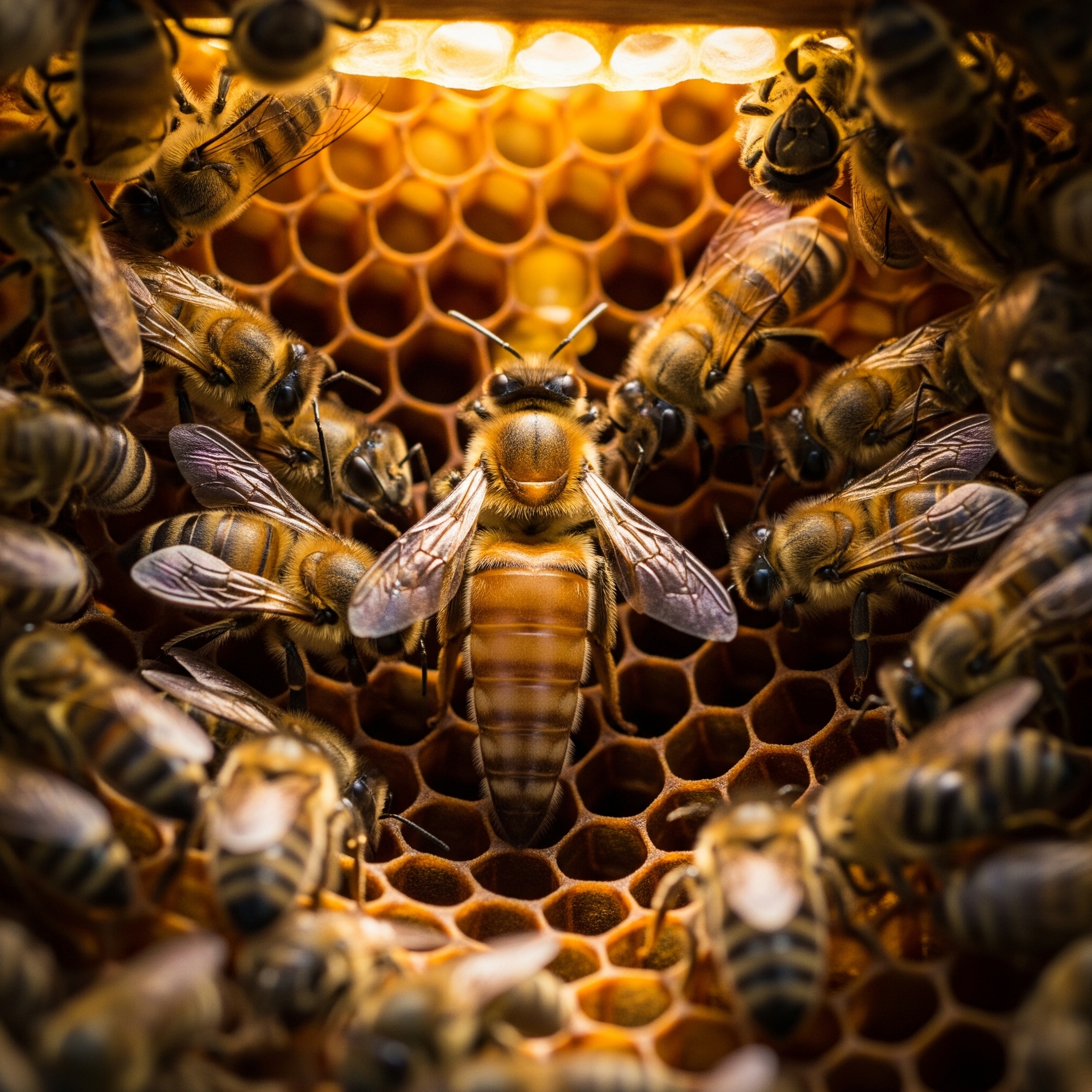
We would like to express our sincere gratitude to Mr. Antoni Teuerle for donating a queen cell breeding to Ulopolis. Thanks to him, we now have a queen bee with the desired breeding characteristics in our apiary. We are honoured by the kindness and support of such an experienced beekeeper.
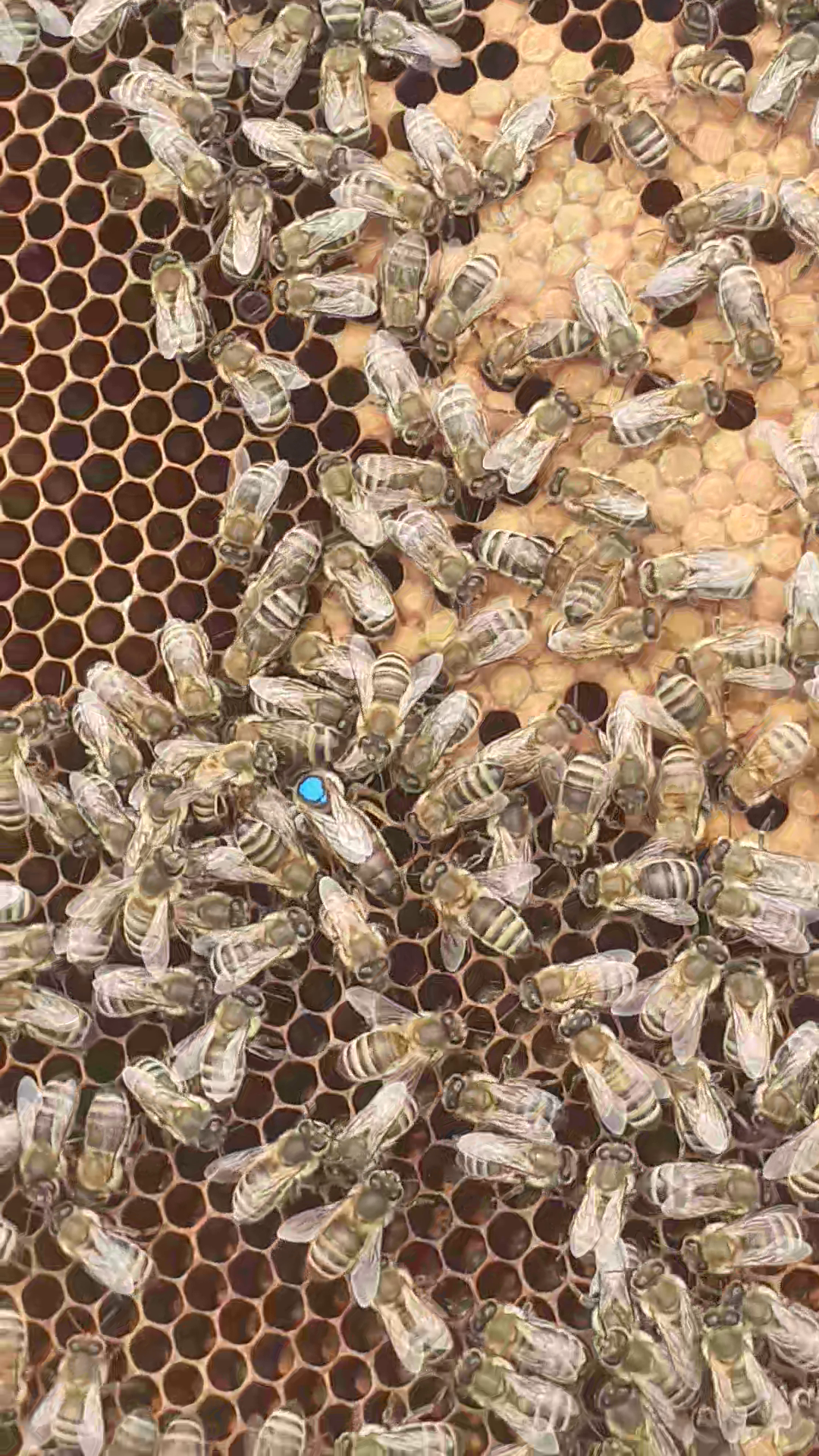
Queen bees are marked with 5 colours: white, yellow, red, green and blue. This year we have blue. The number of colours results from the fact that queen bees live for 5 years. Thanks to the colour of marking, the beekeeper knows how old the queen is.
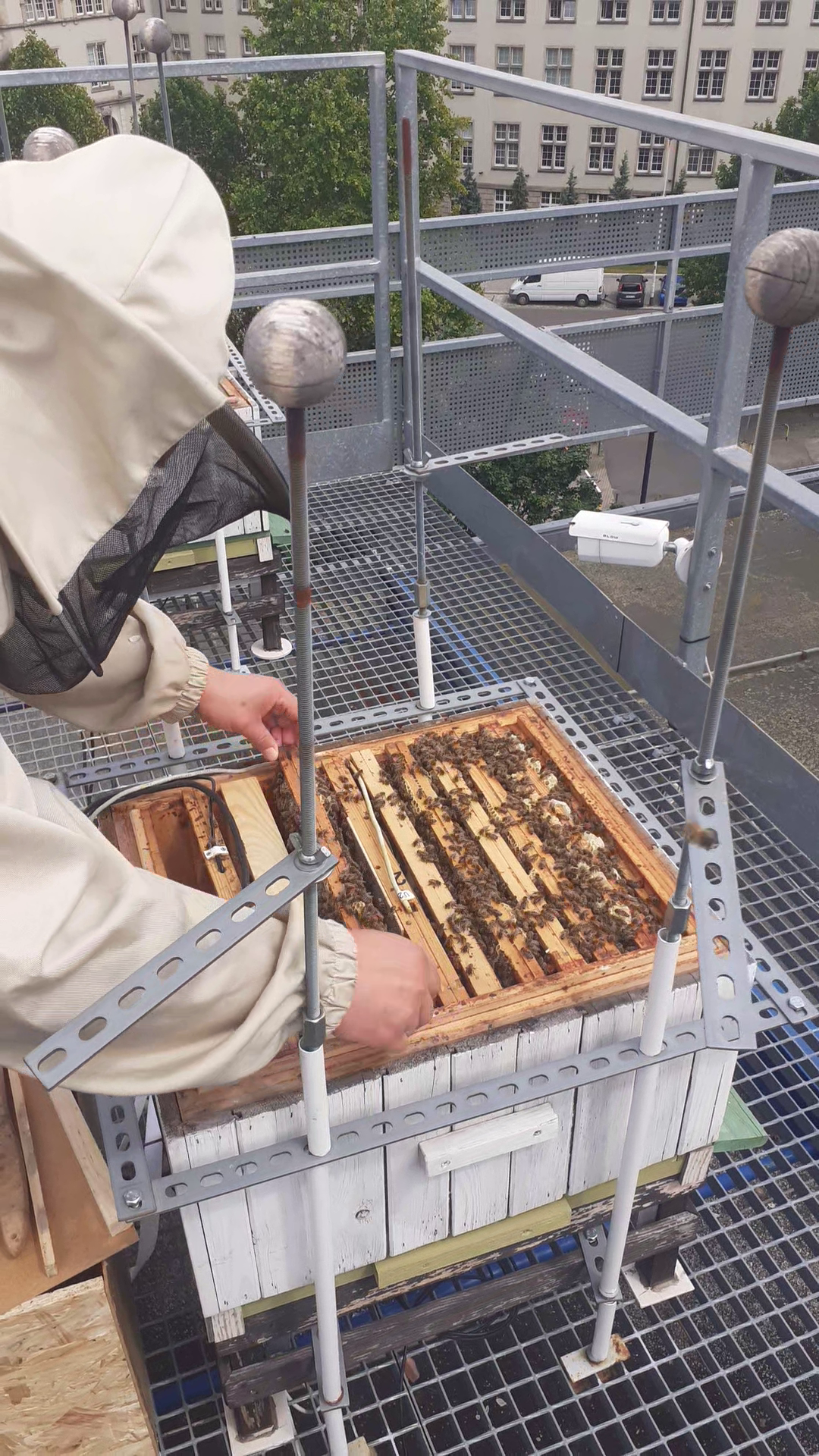
We transferred the frame with food from hive 2 to hive 1 with the nucleus colony. This procedure helped the bees in hive 1. The nucleus colony consists mainly of young bees, and such a colony is not able to collect the food necessary for its development on its own.
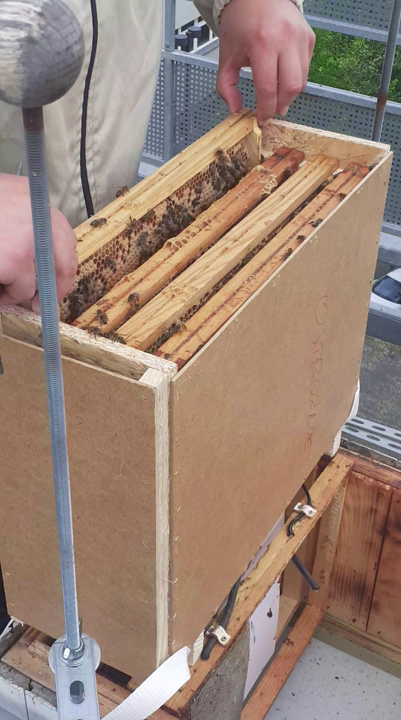
We purchased a bee nucleus colony. It is a young colony. It fits on four frames. It arrived from the Podkarpacie region. We transferred the nucleus colony from the transport box and settled it in hive 1.
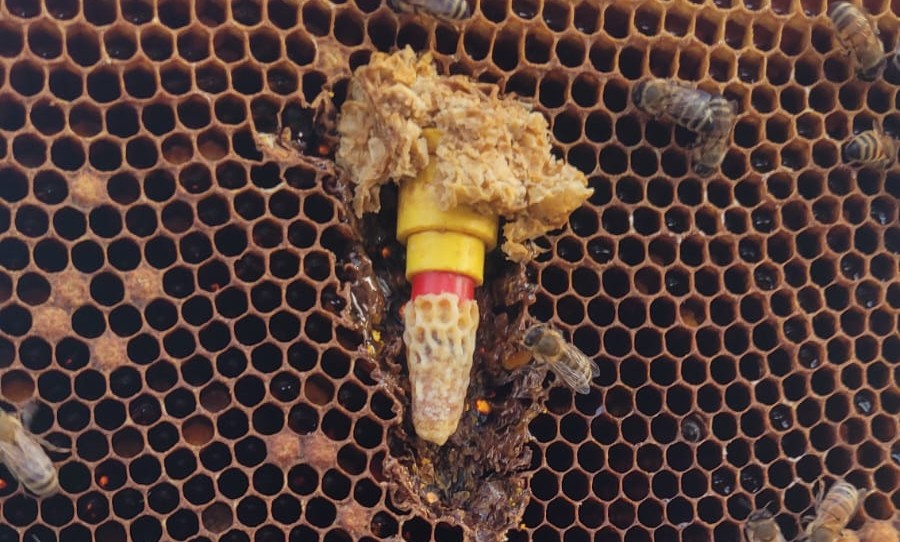
The colony, left without a queen, began to build so-called emergency queen cells (photo 2). We
removed them all (photo 3). Then, a queen cell attained from queen cell breeding (photo 1) was
introduced, so that the bee colony would have the desired characteristics. One values bees, which
are non-aggressive, disease-resistant, and not willing to swarm.
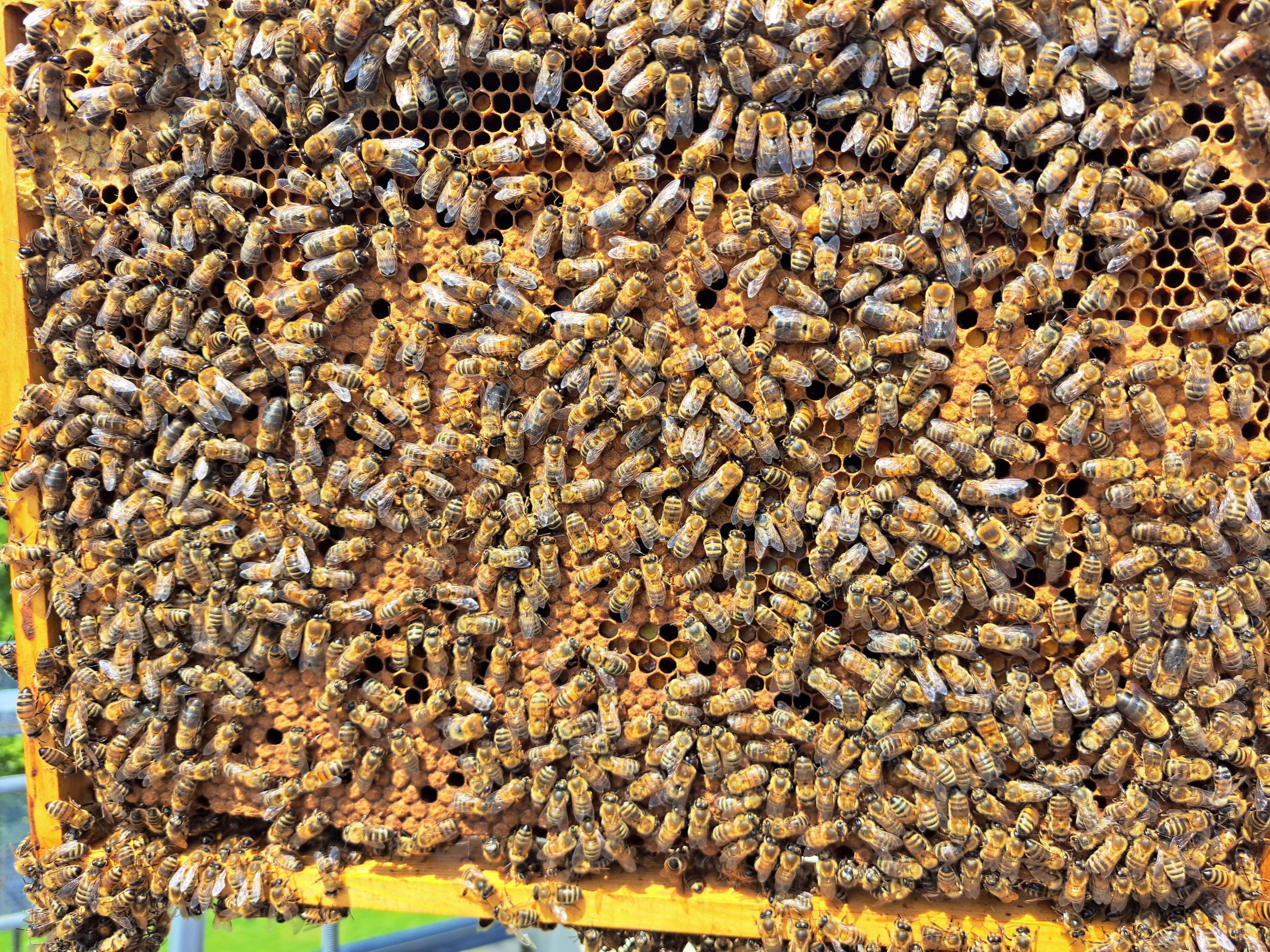
We divided the bee colony, i.e., we created a split. From the original hive (photo 1), we transferred
several frames with sealed brood and the old queen (visible in the centre photo 3) to the new hive (photo 2).
Soon, a queen cell will be introduced to the colony that has been left without a queen.
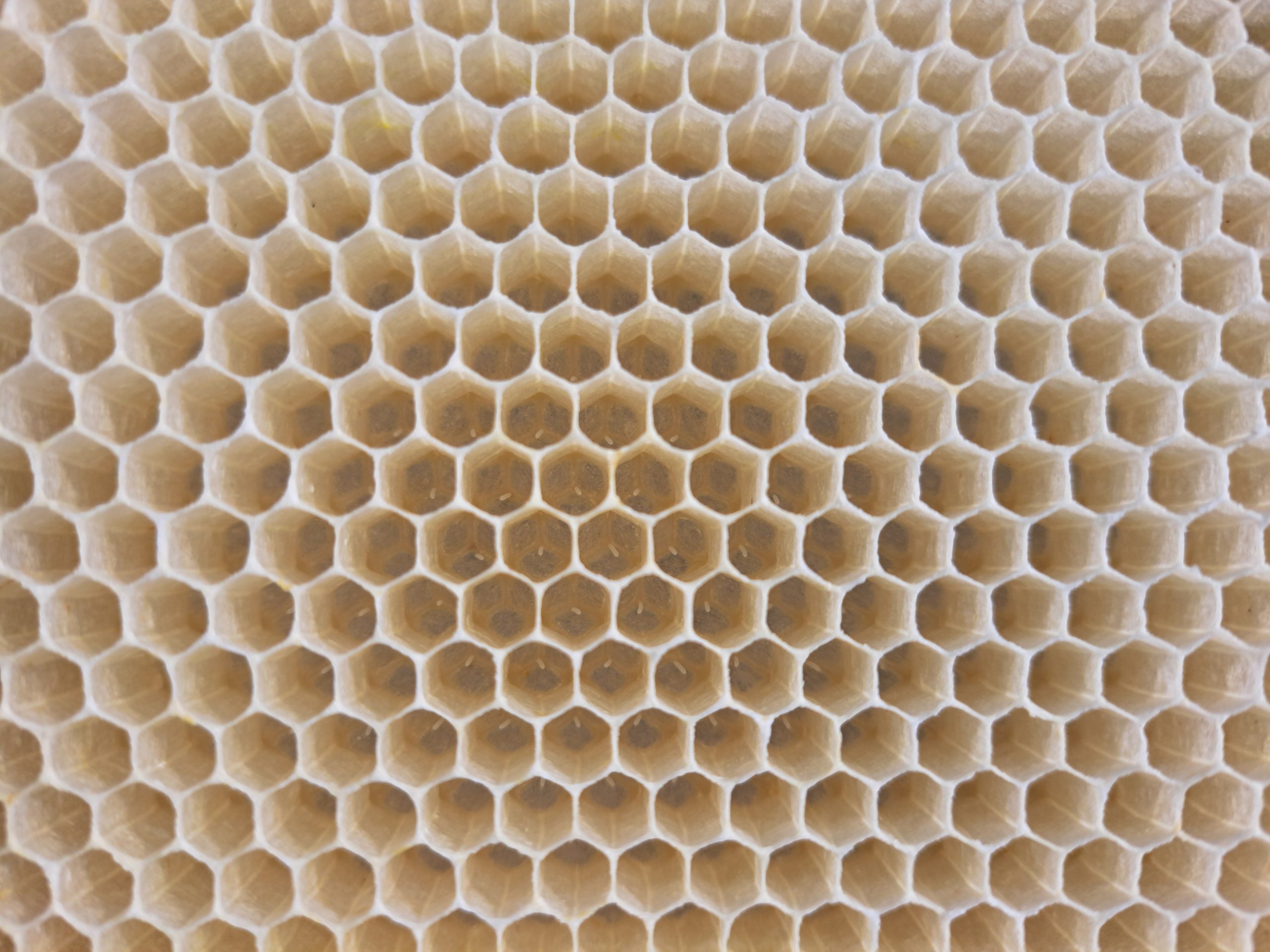
As soon as we delivered a new comb, the bees immediately started to prepare cells for raising brood.
The photo shows the result of their work. Eggs laid by the queen appeared at the bottom of the cells.
The cells' construction rate and the fact that eggs were laid so quickly indicate that the colony is
strong.
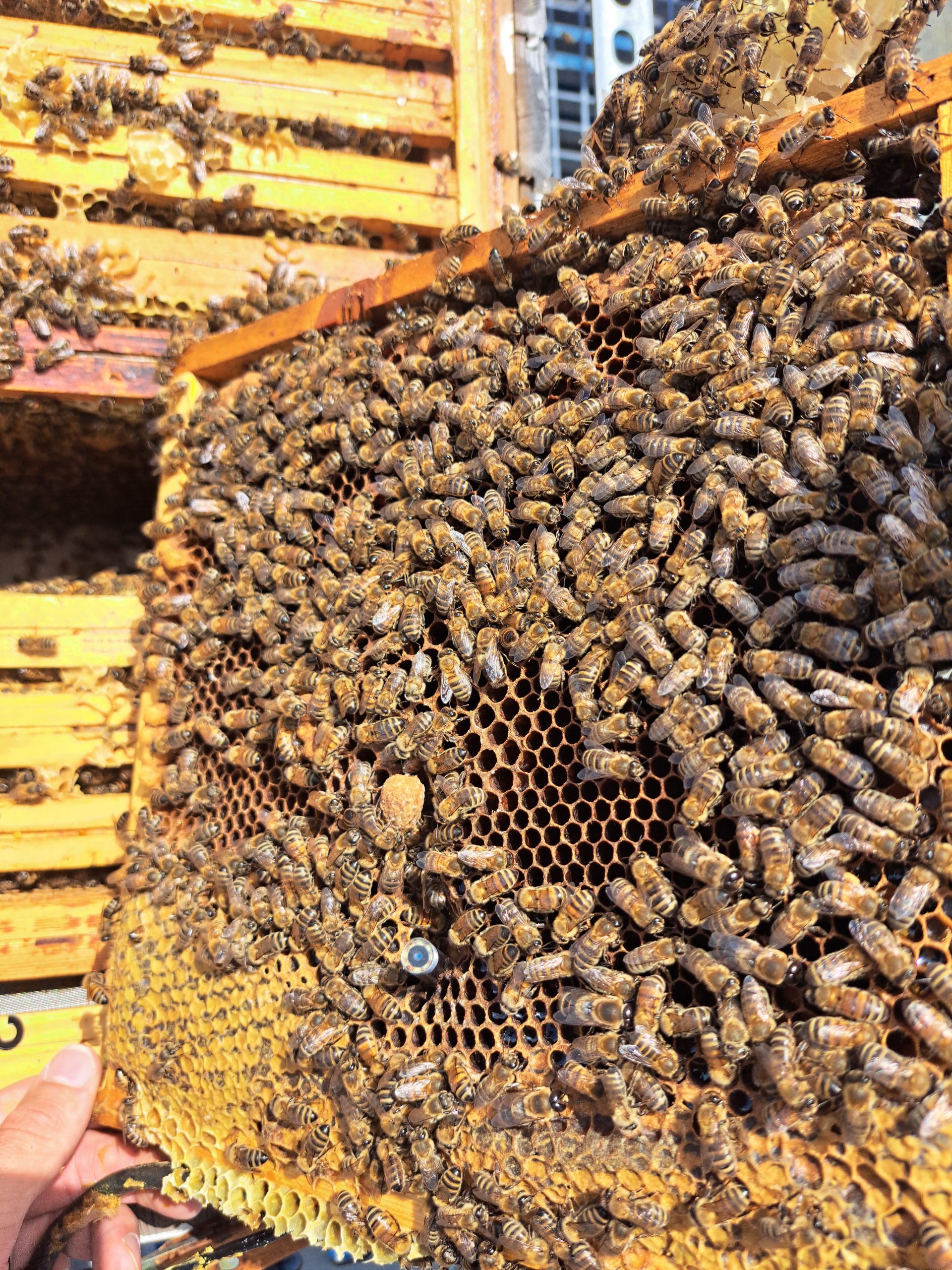
If a bee family wants to divide, the bees build queen cups into which the mother will later lay eggs. A queen cup has appeared in our hive (see near the camera). Fortunately, the cup is still empty, which means the bees may decide to raise a new queen in some time. If the weather is nice and the plants are producing nectar, the insects are busy working, which delays the swarming mood.
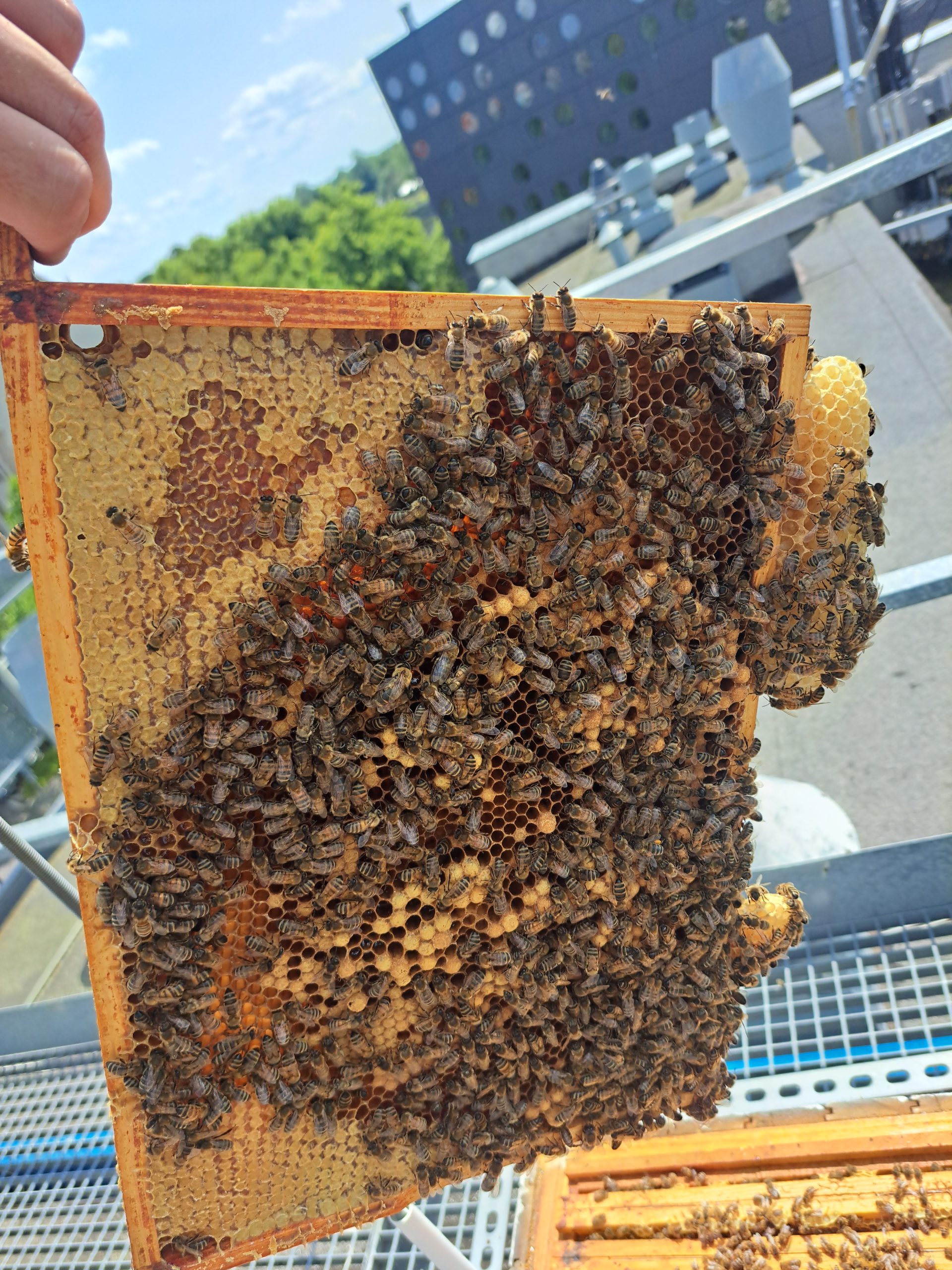
The frame from our hive contains a lot of drone brood (large cells). Also the wild construction under the frame consists of drone cells. The presence of drones in the hive indicates that the bee family is strong and is gradually preparing for division e.g. swarming.
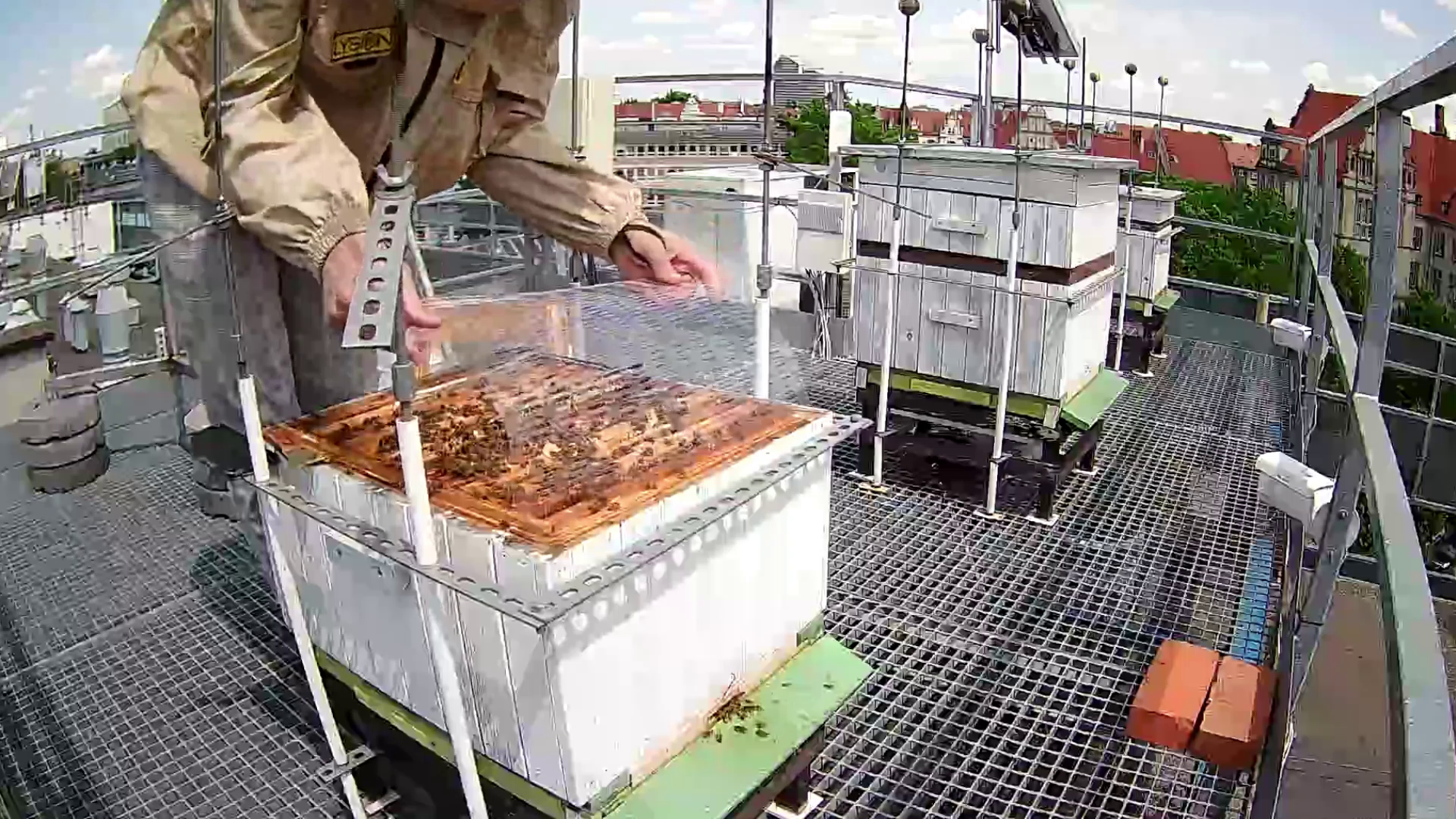
During the inspection, we added a honey box on top of the beehive so
that the growing bee colony would have enough living space. We separated
the top section from the brood chamber with a queen excluder. It
prevents the queen from laying eggs in the frames of the honey box.
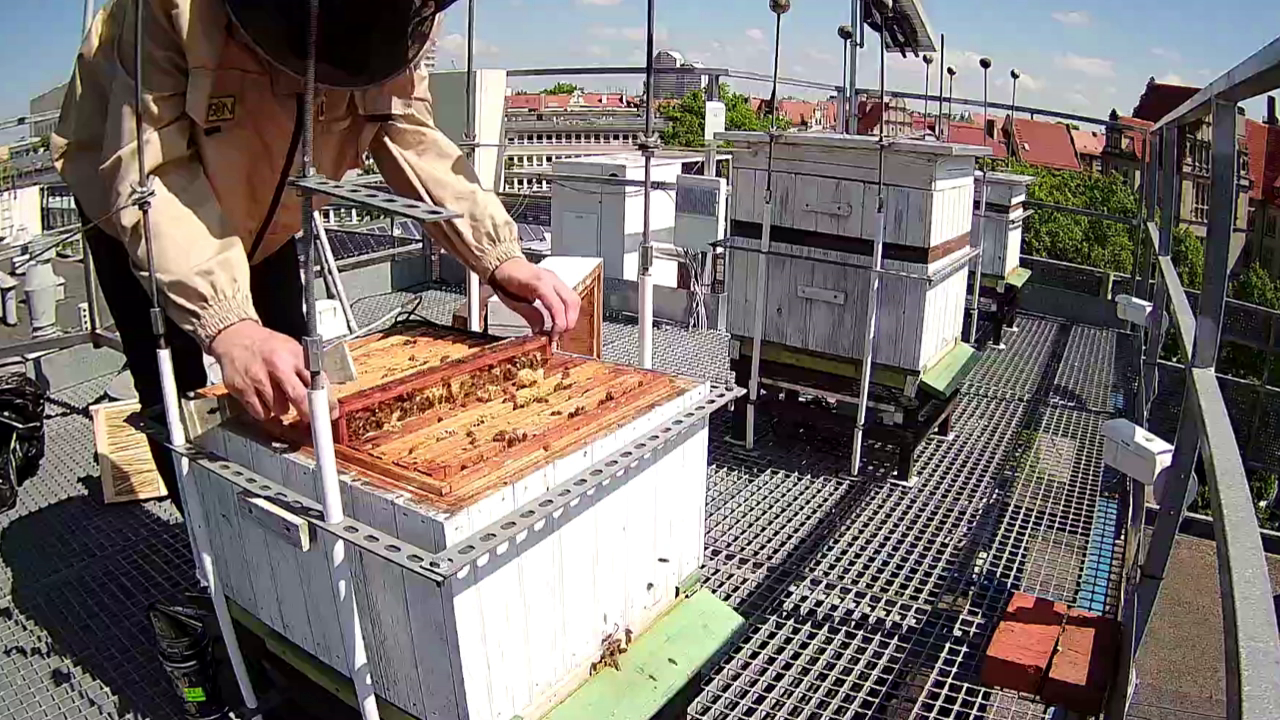
We observed that the colony has consumed a significant portion of the recently added feed. It has resulted in brood increase, since the last inspection. The colony grew stronger. For that reason, we expanded the brood nest. The straw divider was replaced with an additional frame containing feed.
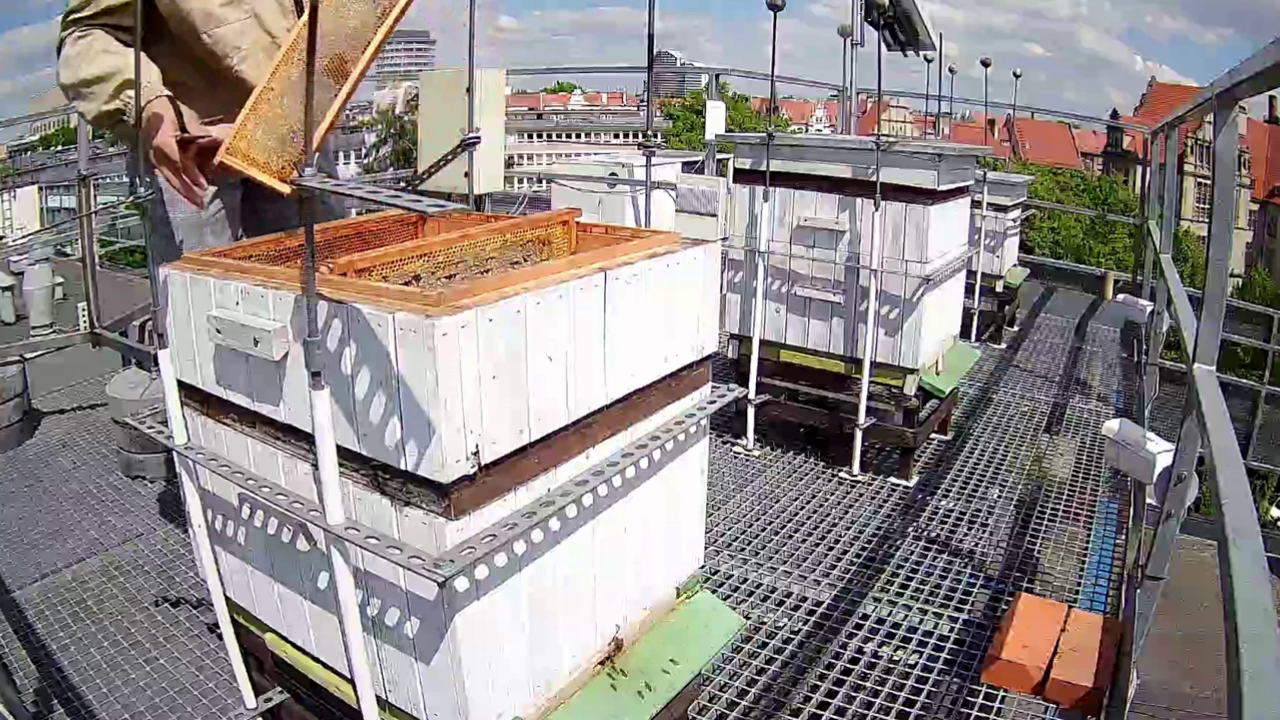
We placed extra frames with food above the beehive cover. Now, the colony has an easy access to additional nourishment needed for its development. This way, we avoided increasing the size of the nest .
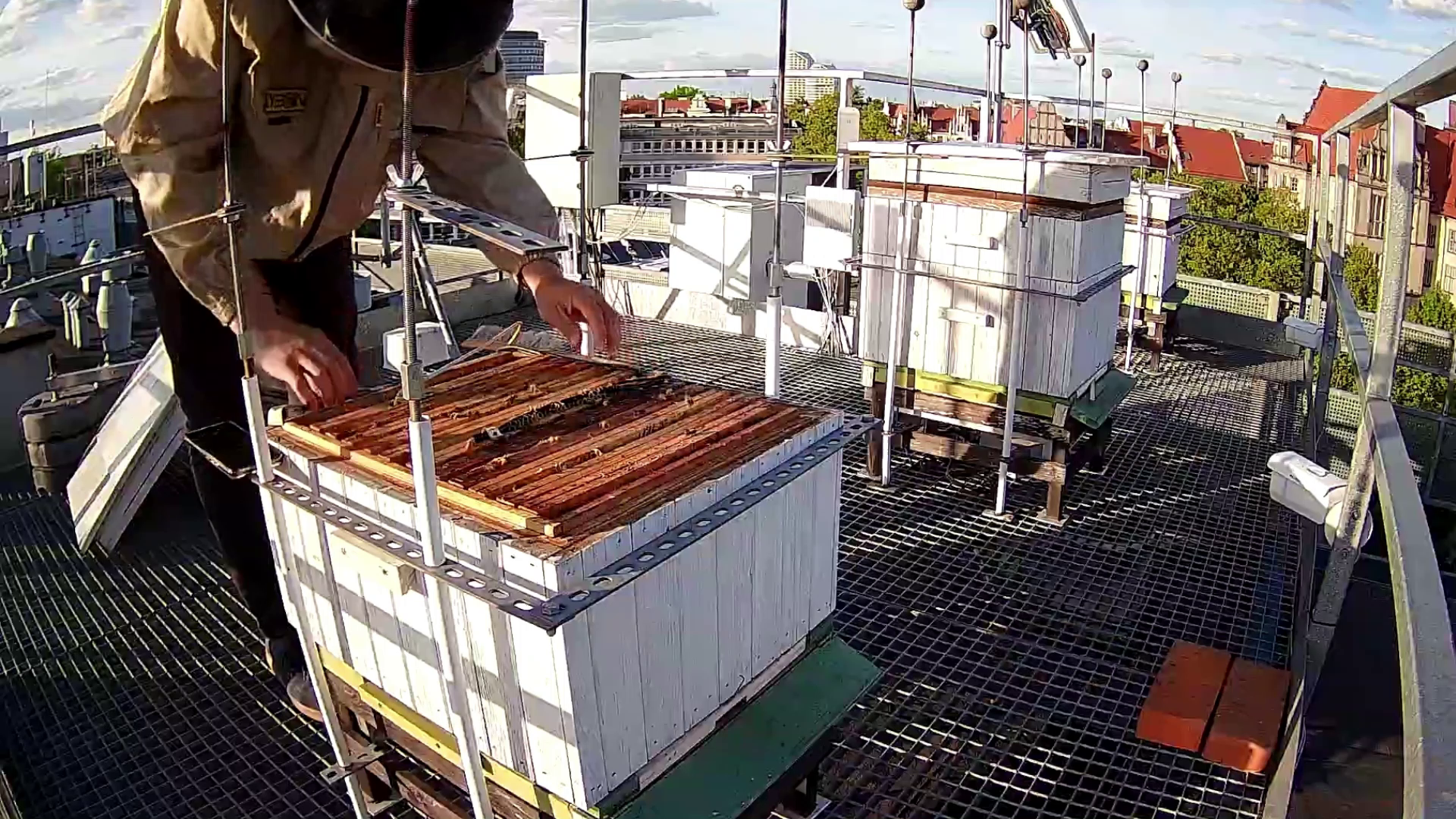
We conducted a routine inspection of the bee colony. We checked the recently introduced wax foundation, the food reserves, and the number of frames the bees occupy. The nest has not been expanded yet. The colony is still too weak.

We completed the first spring inspection of the bee colony. Its condition after the winter was checked.
We paid attention to the number of frames occupied by bees, the amount of brood and food reserves.

kalendarz_1 Participants in the event came from different countries. They found the monitored urban apiary, at the university of science and technolgy, a very intriguing

Some work was needed after winter. Dry parts of plants were removed. Flowerbed was covered with the bark.

TVP3 Wroclaw recorded a segment of the popular program at our apiary. We got our minute in the episode: “Dr. Haust and Strictly Open Secrets: Insects”.
https://wroclaw.tvp.pl/70343271/doktor-haust-i-tajemnice-scisle-jawne
Time slot: 4:54 – 6:00 min.

kalendarz_1 Sometimes it is necessary to look at the bees at night. At this time, the apiary looks, smells and sounds completely different than during

kalendarz_1 When a bee colony lacks a queen, her duties are taken over by one of the bees. She transforms herself into an “alternative queen”.

We have the first scientific publication that deals with Ulopolis. It is publicly available at https://doi.org/10.3390/app13010597 .
Hardy Geraniums and cantips are undemanding. You will meet the first ones on almost all continents. In summer, they produce numerous, graceful, tiny flowers. In the winter, the aromatic geranium will help fight infections. Catnip is quite inconspicious but very attractive in terms of fragrance, They bloom for a long time attracting insects and … cats.
The yellow blossoms of honey goldenrod and the lilac inflorescences of sedum magnificens have adorned our bed since its opening, this fall. Cornflowers reminiscent of wheat fields and sage with intriguingly fragrant leaves, will bloom in the coming year. It won’t be long now.
It’s time for late summer-autumn Helenium. They are quite tall. They have beautiful flower baskets in colors ranging from deep yellow to intense red. Accompanied by them – Missourian Primrose with unusually delicate yellow-lemon colored flowers, which open in the late afternoon and wither the next morning.
Attribution-NoDerivs 3.0 Poland (CC BY-ND 3.0 PL)
Academy of Young Explorers students visited Ulopolis. The meeting triggered a lot of interest.
Wasps are hostile to bees. They are eager to steal the collected resources from the hive. Unfortunately, an encounter with the hive guards awaits them at the outlet.
It’s already autumn and there seem to be few flowers around. However, our bees are carrying plenty of yellow pollen to the hive. Could it be that they have noticed the flower bed?
It’s getting colder and colder outside. So we have reduced the size of the outlets. This helps prevent hives overcooling. The bees are not bothered by this restriction. They find alternative entrances.
As of today, you can observe the temperature and humidity of the air in our hives on the Ulopolis website. We also provide data on the concentration of carbon dioxide, volatile organic compounds and particulate matter in the hives’ air. The curious ones may discover that we also know the weight of the hives.
We finished planting the plants, raked and cleaned up. Now we admire the whole thing. Enjoy!
See more content >
The first plants have appeared in our bed. We plant them in a “mix”. They have different heights, leaves and colors of flowers.
See more content >
We make a bed of honeymaking plants. It is located on the University Campus, next to our apiary. It has 440 m2. Stage 1 is the removal of the lawn.
See more content >
In Ulupolis, we harvested the honey. It has been a little, but beautiful and tasty!
See more content >
Sometimes bees connect frames with wax bridges. This affects the ventilation of the hive. Unfortunately, we have to break the connections in order to do the inspection.
The queen bee has an ID. Opalite tag makes it easier to find the queen on the comb. The color of the badge tells the age of the queen.
.
.
.
.
During our weekly apiary inspection we observed the dance of the bees. This distinctive movement is a way of conveying information.
.
.
.
.
.
We have recorded the process of winning a new bee. Thanks to new bees, the colonies in the apiary are becoming more numerous and growing stronger.
.
.
.
.
.
.
.
.
.